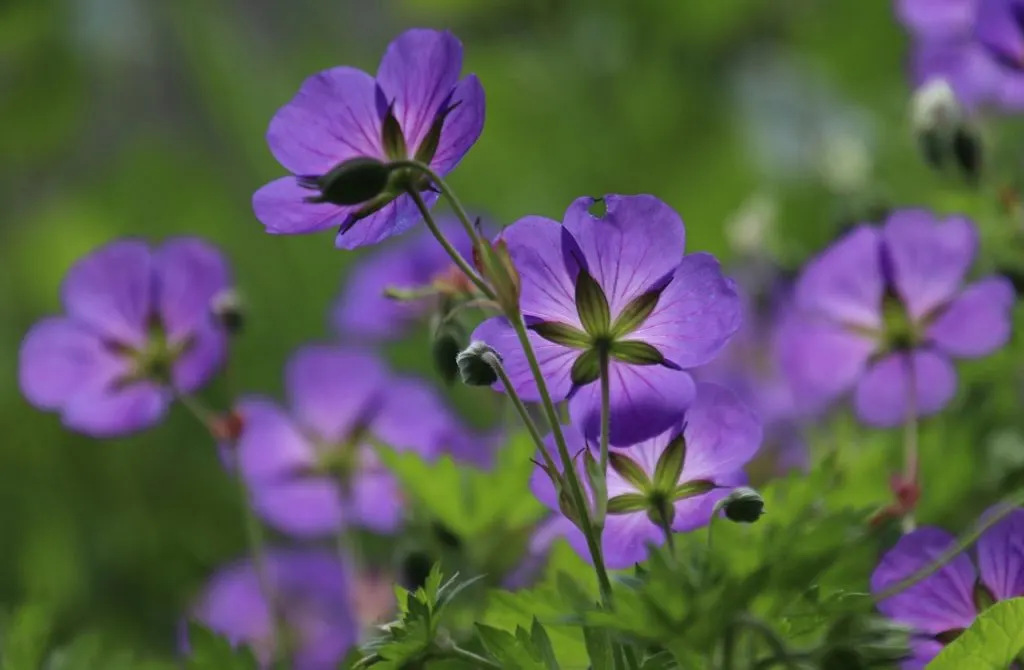It’s amusing how certain indoor plants we nurture with care bear striking resemblance to the weeds we despise in our lawns.
African violets, thriving indoors, are indeed stunning houseplants, whereas the wild violets that spring up in our yards and gardens are often seen as bothersome.
Yet, upon closer inspection, they’re not all that dissimilar. The dainty blossoms of wild violets form a lovely tapestry of green and purple come springtime, when they’re most lively.
Before you decide to rid your landscape of this indigenous plant, ponder over the myriad benefits it offers, such as supplying essential nectar and filling gaps where grass struggles to grow.
The main reason wild violets get labeled as weeds is their knack for rapid growth and spread.

They appear in lawns and flowerbeds—areas one might prefer to keep immaculate. This low-lying ground cover spreads swiftly through rhizome division and seed dispersal, making it somewhat challenging to eradicate once established.
Fortunately, should you encounter unwanted wild violets in your flowerbed, you can remove them by loosening the soil and extracting the clump of rhizomes.
Maintain ample mulching to deter seed germination. Conversely, considering permitting these natural marvels to flourish in certain yard areas can yield numerous advantages.
1. Early nourishment for pollinators
Arguably, the most crucial role wild violets play in home landscapes is providing nectar for bees, butterflies, and other early-season pollinators facing limited food sources.
As various insects emerge from their winter dormancy underground or in leaf piles, they require nectar, which is scarce early in the year. These premature blooms deemed “weeds” could mean the difference between establishing a pollinator-friendly garden and fostering a barren environment unsupportive of beneficial insects.
This modest “weed” also serves as the sole food source for the larvae of 14 greater fritillary butterfly species and 16 lesser fritillaries, according to the Xerces Society.
Among these delightful insects is the Diana fritillary, Arkansas’s state butterfly. By allowing this plant to thrive in your outdoor space, you can cultivate a butterfly haven benefiting both larvae and adult butterflies.
Various early-season blossoms thrive in natural environments. Wild violets join the nectar-supplying ranks of other “weeds” such as dandelions, henbit, purple deadnettle, and chickweed, to name a few.
Applying herbicides while these plants bloom will eliminate pollinators that rely on them for sustenance. If you find the weeds intolerable, keep them trimmed so their blooms don’t open. Remove them when not blooming to minimize harm to those insects.
2. Low-maintenance flora
Honestly, wild violets won us over with their “low-maintenance” tagline. How many plants can boast such a claim? Yet, it’s true—much like many “weeds,” wild violets typically mind their own business, needing minimal or no assistance to thrive.
They flourish in poor soil, necessitate no fertilization, and rarely require transplantation (they handle that task themselves). In areas where grass struggles to grow from seed or sod, wild violets might flourish.
Additionally, wild violets are deemed drought-resistant, meaning they seldom need watering. Should an extreme drought occur, the verdant, heart-shaped leaves may dry and recede slightly. Thankfully, with rain, those rhizomes will produce fresh green foliage, restoring the plant’s aesthetic appeal.
3. Ideal for no-mow lawns
Growing in all light conditions from shade to full sun, wild violets serve as a delightful addition to no-mow lawns.
If you’re weary of pushing a hefty lawn mower across your yard every couple of weeks during the summer heat, transitioning to a no-mow lawn could be worthwhile.
Though wild violets tend to remain shorter in shaded regions, they still function as a low-lying ground cover anywhere and will grow taller in full sunlight.
The beauty of natural lawns, aside from not requiring mowing, lies in the amalgamation of native plants, fostering a mini ecosystem beneficial for soil health and pollinators. Alongside wild violets, you might incorporate white clover, creeping thyme, or other suitable options for your locale, crafting a lovely and advantageous outdoor space.
However, transitioning from turf grass to a no-mow lawn demands patience as it may take some time to complete the process.
4. Simple edibles
We devote considerable effort to growing nutritious food in our gardens, yet wild violets growing in our yards offer an accessible, adaptable source of sustenance that demands no upkeep.
These exemplify the latest gardening trend of cultivating “edimentals,” which are plants both ornamental and edible.
The simplest way to enjoy this foliage is by harvesting young leaves for salads. These flavorful leaves can also enhance soups or be sautéed and consumed akin to fresh greens like spinach.
For a fancier touch, adorn your salad with fresh, edible violet blooms, or freeze them to elevate the presentation of your beverages. Many individuals infuse vinegar and syrups with these purple blossoms as well.
Wild violets may also deliver several health benefits. Some claim these “weeds” are rich in vitamins A and C. It’s remarkable to consider that these plants we strive to eliminate offer a substantial array of anti-inflammatory and antioxidant properties.
Nevertheless, bear in mind that while wild violets are edible, the common houseplant African violet is not suitable for consumption.
